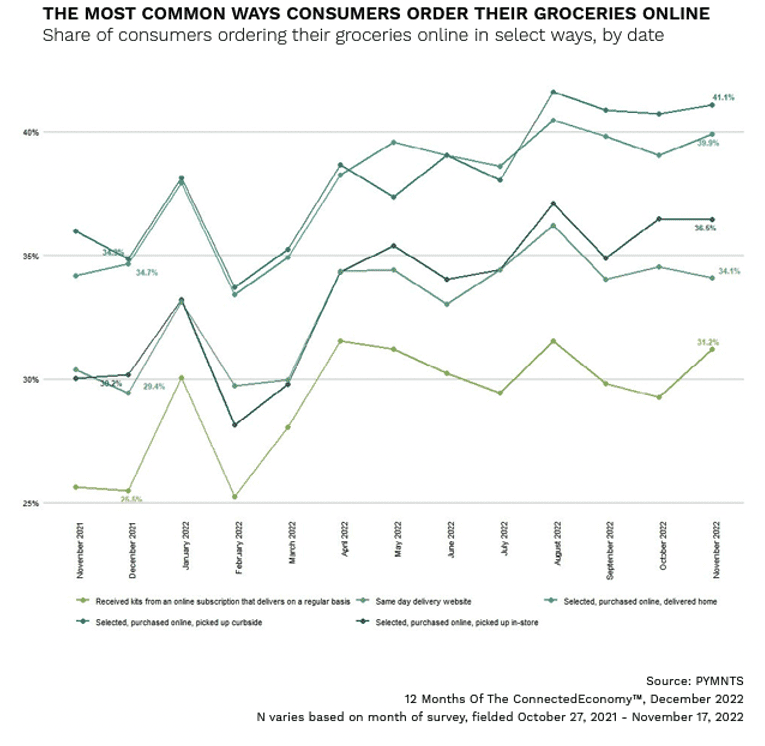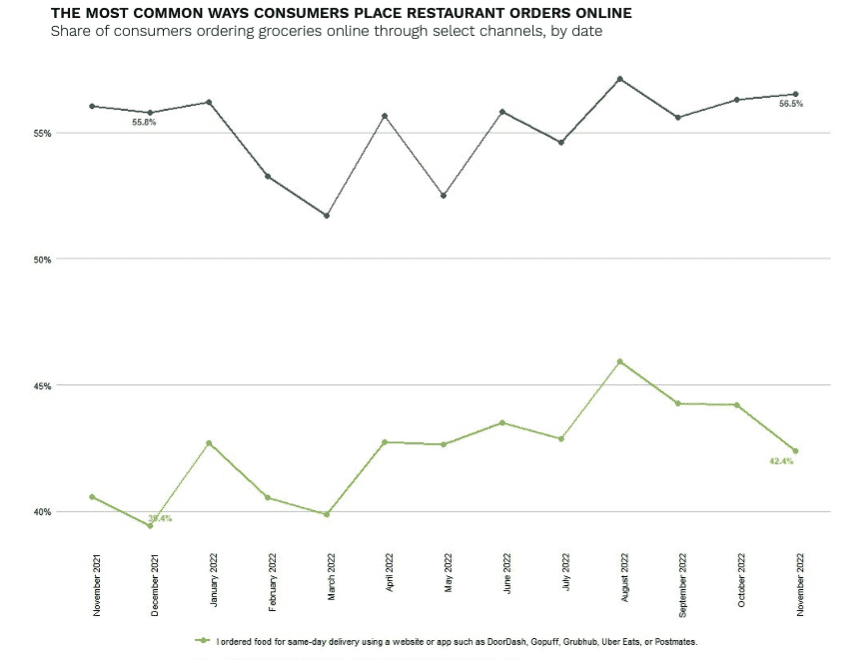
Restaurants could have an opportunity to edge out third-party aggregators for food delivery.
The PYMNTS “12 Months of the ConnectedEconomy™” report examined the digital engagement of 33,792 U.S. consumers over the last year. It tracked how, and in what ways, consumers have integrated digital channels and platforms. Perhaps unsurprisingly, the series found that 51% of U.S. adults ordered groceries online for delivery or curbside pickup every month between November 2021 and November 2022. Curbside was the more popular option, but home delivery and in-store pickups grew as well.
 During the same period, consumers also had more restaurant orders delivered to their homes. That included orders placed on restaurants’ websites or via aggregators such as Uber Eats or Grubhub.
During the same period, consumers also had more restaurant orders delivered to their homes. That included orders placed on restaurants’ websites or via aggregators such as Uber Eats or Grubhub.
 Consumers’ use of digital channels to place restaurant orders maintained a larger share of home deliveries than grocery deliveries but held a nearly flat growth rate compared to the previous year. Overall, food delivery aggregators saw a decline in 2022. For example, DoorDash stock took a 67.9% loss in 2022. After enjoying triple-digit revenue percentage growth rates in 2020, its growth in 2021 dropped to 69% and is currently at about half that rate. Restaurants may consider branching out from an aggregator-only model to decrease any potential volatility as aggregators redefine their offerings.
Consumers’ use of digital channels to place restaurant orders maintained a larger share of home deliveries than grocery deliveries but held a nearly flat growth rate compared to the previous year. Overall, food delivery aggregators saw a decline in 2022. For example, DoorDash stock took a 67.9% loss in 2022. After enjoying triple-digit revenue percentage growth rates in 2020, its growth in 2021 dropped to 69% and is currently at about half that rate. Restaurants may consider branching out from an aggregator-only model to decrease any potential volatility as aggregators redefine their offerings.
Restaurants can also increase customer loyalty by offering home delivery and targeted discounts through their own platforms. This opportunity is particularly viable for smaller restaurants. An additional PYMNTS survey found that among the 34% of respondents who had tried a new-to-them restaurant in the 30 days prior, the most common choice was independent, full-service establishments.
A few restaurants are trying different models to bridge the gap between home delivery by individual establishments and meal prep subscription services. For example, in the U.S., dessert chain Milk Bar launched a subscription aimed at growing its shipping business. The company’s “First Bite Club” subscription service offers monthly deliveries of limited-time baked goods available exclusively online.
Consumers have made it clear that they prefer the convenience of prepared meals delivered to their door. Restaurants, like so many other B2C sectors, may consider capitalizing on this preference to grow and retain repeat diners.